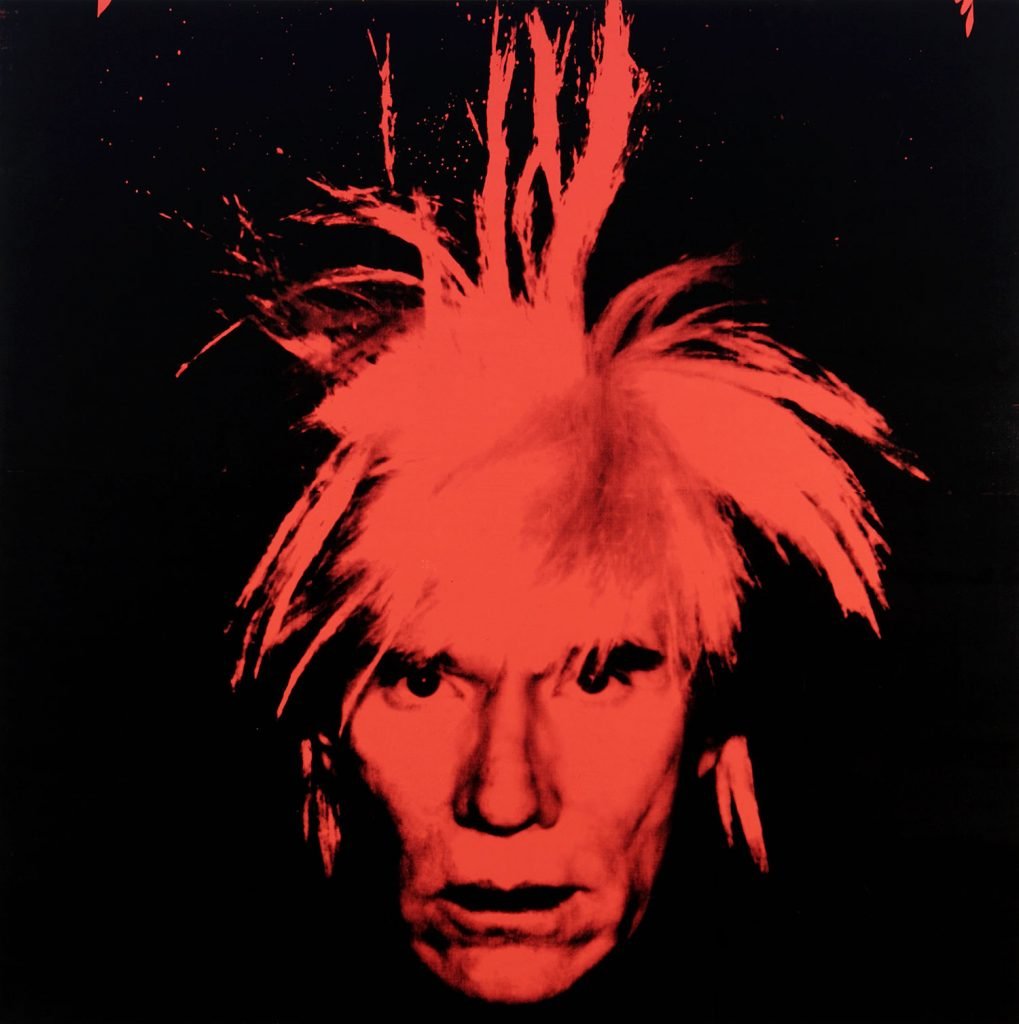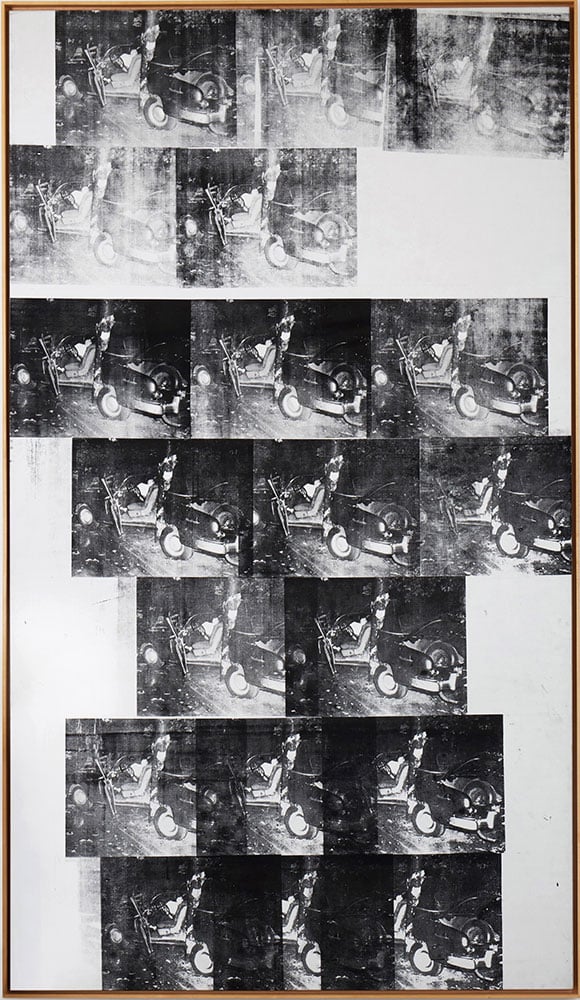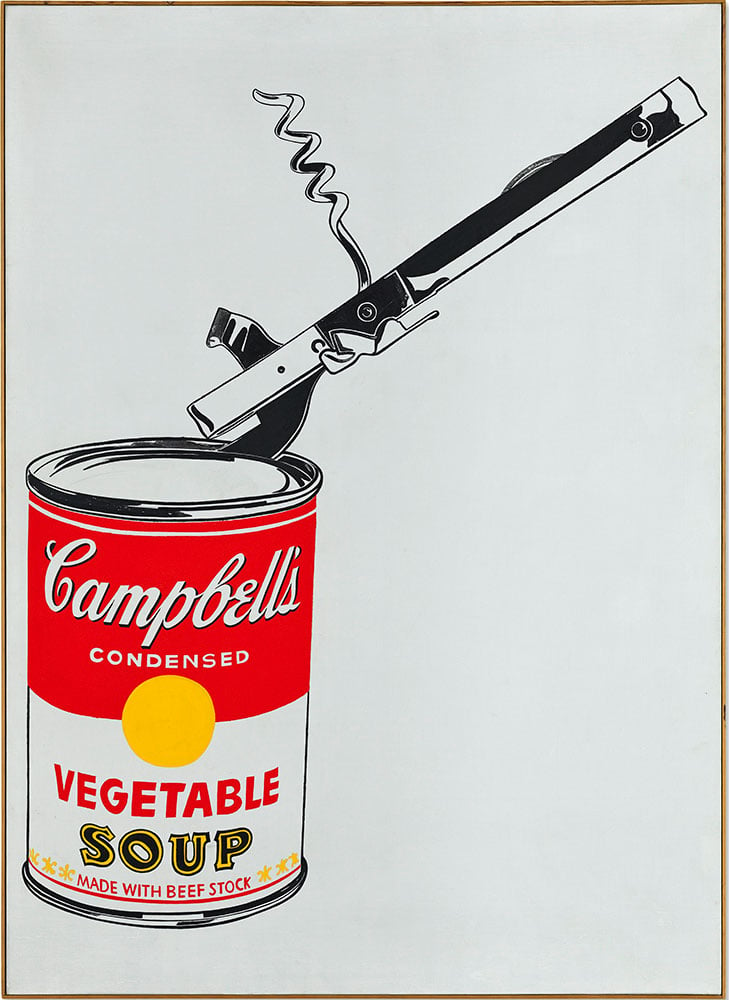Art World
Who Was the Anonymous Buyer of Andy Warhol’s $85 Million ‘White Disaster’ at Auction Last Year? The Truth Won’t Surprise You
The work will appear in a major Warhol survey at the Brant Foundation, New York, opening May 10.

The work will appear in a major Warhol survey at the Brant Foundation, New York, opening May 10.

Lee Carter

Andy Warhol’s White Disaster (White Car Crash 19 Times) sold at Sotheby’s New York last year for $85.4 million. The sale price was a record for a Warhol painting, making White Disaster one of the most valuable works of art to ever go under the gavel.
The 12-by-6-foot vertical painting, a silkscreen grid of a car crash that occurred on the New Jersey Turnpike in 1963, is one of Warhol’s best-known early pieces. It’s considered a seminal work of Pop Art, defining the movement with its use of everyday imagery and exploration of nontraditional themes.
After its inaugural display at Stable Gallery in New York City in 1964, White Disaster traveled to major museums around the world, including MoMA (1968 and 2014), Tate Gallery (1970), the Centre Pompidou (1977 and 2018), and the Whitney Museum of American Art (1989).
Yet the buyer of White Disaster was unidentified as of last year and remained unknown—until now.

Andy Warhol, White Disaster (White Car Crash 19 Times) (1963). © 2023 The Andy Warhol Foundation for the Visual Arts, Inc. / Licensed by Artists Rights Society (ARS), New York
Artnet News can confirm that the buyer was Peter M. Brant. The mega-collector purchased the Warhol work—anonymously over the phone—to serve as the centerpiece of the Brant Foundation’s upcoming exhibition of the artist’s work at its East Village location (the building was purchased from artist Walter de Maria’s estate in 2014). Holding over 1,000 works of contemporary art, the foundation’s collection is one of the world’s most important.
The exhibition, titled “Thirty Are Better Than One” (May 10–July 31), spans the entirety of Warhol’s career and includes over 100 artworks, ranging from his early drawings and sculptures to his famed Polaroids and silkscreens. The show takes its title from Warhol’s eponymous Mona Lisa grid.

Andy Warhol, Thirty Are Better Than One (1963). © The Andy Warhol Foundation for the Visual Arts, Inc. / Licensed by Artists Rights Society (ARS), New York.
Brant explained to Artnet News that he’s been collecting Warhol for over 60 years. “Leo Castelli first introduced me to Andy in 1968 after I had already been collecting his work for some time,” he said. “[Warhol] embodied the characteristics of a true Leonardo figure—highly intelligent, a skilled writer, influential in film and performance, and an expert in imagery. His impact can be felt through the work of many artists today.”
Brant and Warhol’s friendship lasted until the artist’s death in 1987, when Brant took over the publishing of Warhol’s Interview magazine. Brant continued to collect Warhol, amassing one of the largest collections of his works in the world. Brant has also been a major lender to several exhibitions, including 2018’s “Andy Warhol: From A to B and Back Again.”

Andy Warhol, Big Campbell’s Soup Can With Can Opener (Vegetable), (1962). © The Andy Warhol Foundation for the Visual Arts, Inc. / Licensed by Artists Rights Society (ARS), New York.
In “Thirty Are Better Than One,” the foundation will also display Big Campbell’s Soup Can With Can Opener (Vegetable), which Brant acquired at auction in 2017, according to a spokesperson. This will be the first time the artwork has been shown in New York since Warhol’s traveling retrospective “Andy Warhol: A Retrospective” at MoMA in 1989.
The piece is one of the earliest of Warhol’s Campbell’s Soup Can paintings and the only one to feature a can opener, marking the beginning of an 11-painting sequence that ended with a crushed soup can. Further, the painting became the first of Warhol’s images to be shown in a museum when it was exhibited at the Wadsworth Atheneum in 1962.
“Thirty Are Better Than One” is on view at the Brant Foundation, New York, May 10–July 31, 2023.